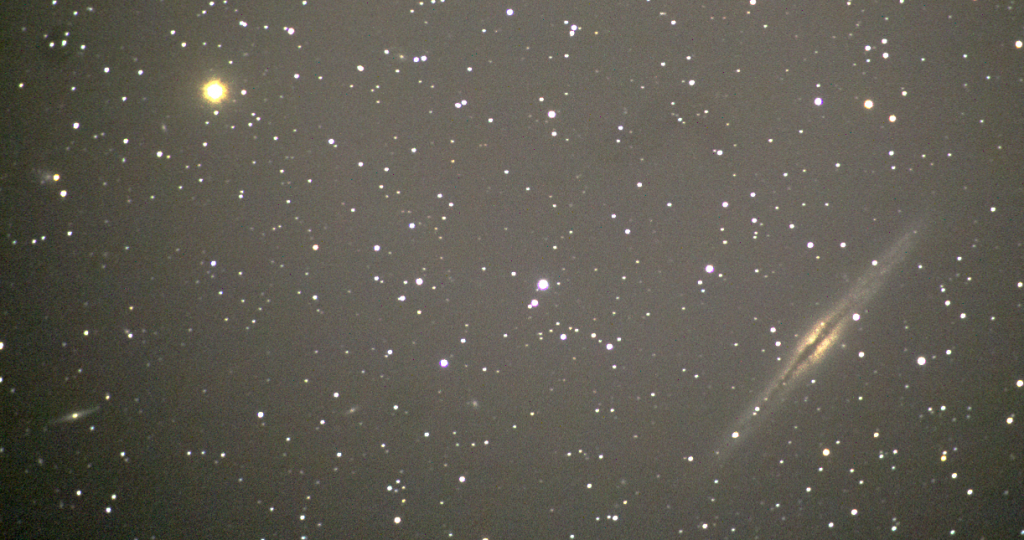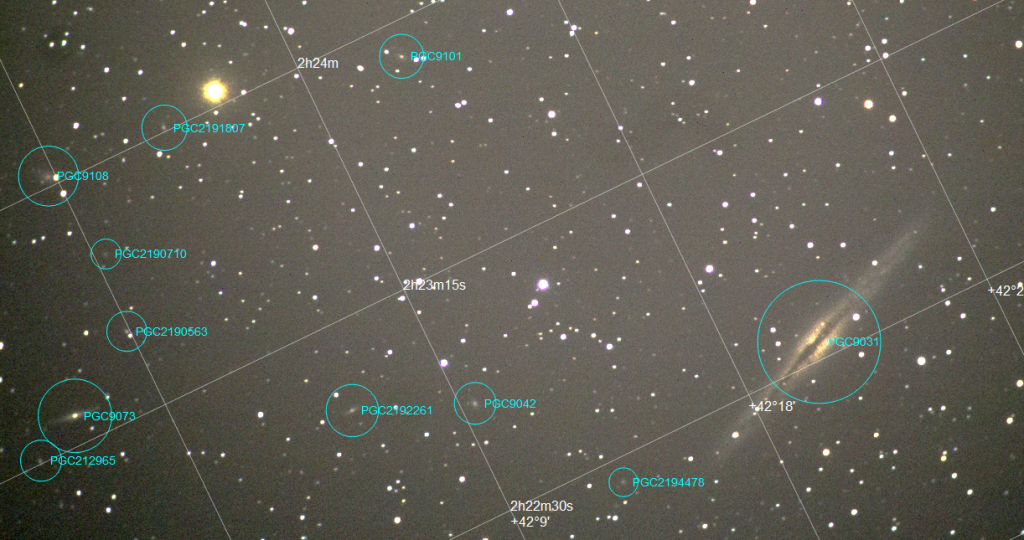
Above is a picture of the edge on spiral galaxy known as NGC 891 in Andromeda, discovered by William Herschel perhaps the greatest astronomer ever. I took this Sunday evening at the River Ridge Observatory with my 11″ SCT on a CGEM DX mount and my Canon EOS T5. This is a composite of six 60 second images and my paltry Photoshop skills. I framed the shot to get the other little edge on spiral on the left. I don’t know it’s designation yet. There is also a a fuzzy above it about a third the way from the top.
Below my friend Don Walters imported the picture into PixInsight and ran a script to identify several galaxies. I had spotted three counting the big one, he found eight more. Looks like a star chart with those lines and designations.



